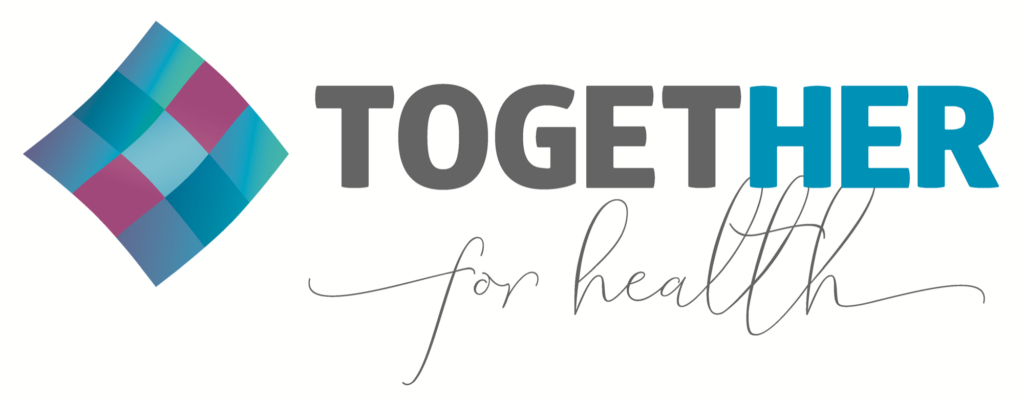TogetHER Testimony at the 47th UNAIDS Programme Coordinating Board Meeting, December 18, 2020
TogetHER Executive Director Heather White was asked to provide comments at the 47th Meeting of the Joint United Nations Programme on HIV/AIDS (UNAIDS) Programme Coordinating Board on Friday, December 18th. This critical gathering focused on reviewing progress in the development of UNAIDS’ forthcoming Global AIDS Strategy for 2021-2026.
The Programme Coordinating Board included a special thematic session: Cervical cancer and HIV: addressing linkages and common inequalities to save women’s lives. Dr. White’s comments are presented here in full.
Thank you for the opportunity to address the delegation today, and for highlighting the fight against cervical cancer.
My name is Dr. Heather White, and I am the Executive Director of TogetHER for Health, a global non-profit which works alongside other civil society partners to highlight the urgent need for cervical cancer prevention and control worldwide. At TogetHER, we have a single mission (which may sound familiar): to eliminate cervical cancer. In support of our mission, we advocate with policy makers and funders alike to ensure that women and girls have access to high quality, evidence-based interventions to protect against HPV and cervical cancer. We partner with several international organizations with extensive service delivery and advocacy networks to support integrated sexual reproductive health and rights for girls and women.
As you all know, HIV, HPV and cervical cancer are inextricably interlinked. Women living with HIV are at a six-fold increased risk of cervical cancer than women without HIV; conversely, women with persistent HPV infection are twice as likely to acquire HIV than their peers.
Cervical cancer and HIV both are diseases of inequality and stigma, that lay bare health disparities across and within countries. Such disparities are being made even more acute by the harmful impact of the COVID-19 pandemic on the lives of women and girls – who are dropping out of school at alarming rates, and whose health and safety are under attack during COVID-19 lockdowns.
For each of these reasons, I remind you of the urgent needs of women and girls living with HIV, as well as those at high risk of HIV infection:
- First, primary prevention with HPV vaccination is crucial. HPV vaccines protect against 70-90% of HPV types that cause cervical cancer. These vaccines have proven extremely safe and effective. Yet, only 10% of girls have access to HPV vaccine in low and middle-income countries, as compared to 90% in high income countries. We must do more to increase the number of vaccines available, and begin to close this unacceptable gap in vaccine coverage for ALL girls, including those living with HIV.
- Women with HIV require regular screening, and at younger ages, to ensure timely detection and successful treatment of precancerous lesions. HPV DNA screening, particularly paired with self-collection of specimens, can simplify screening by triaging women who need additional services into care.
- Treatment for precancerous lesions, including thermal ablation, can be integrated into routine care to treat early cases of pre-cancer, thus preventing invasive cancer.
Respectfully, I offer the following recommendations to this delegation to ensure access to cervical cancer services for girls and women and key populations using a life-course approach.
1. Please allocate the necessary resources to increase access to cervical cancer services as part of comprehensive SRHR package for girls and women living with HIV. The WHO elimination strategy notes that fully funding the cervical cancer elimination agenda in low- and lower middle-income countries will require an estimated $10.5 billion by 2030, which translates into an annual average $875 million USD. Research conducted by the TogetHER for Health team indicates that in 2019, a total of $121.3 million USD, or roughly 14%, of the total needed was spent on cervical cancer prevention programs in these countries. We have a long way to go to secure the funding needed. Ensuring more streamlined coordination of PEPFAR, GAVI and the Global Fund can increase scale and health impact for both cervical cancer and HIV.
2. Please affirm the inclusion of the new cervical cancer and HIV targets outlined in the Global AIDS Strategy 2021–2026 to strengthen integration of HIV with HPV and cervical cancer prevention, screening, treatment, namely that 90% of women and adolescent girls have access to integrated or linked services for HIV and cervical cancer. Integrated interventions are efficient, impactful, and cost effective. It is simply unacceptable to invest in the health and wellbeing of women living with HIV, only to have them die of a preventable and treatable cancer.
3. Lastly, in today’s era of misinformation and myths, it is crucial that women, girls and their families have access to timely, fact-based, actionable information delivered by trusted sources. Please support the development and deployment of educational resources on HIV, HPV and cervical cancer interventions across the life course. Education and demand creation must start now – and be multi-generational in its scope – to ensure these interventiosn become a standard of care now which girls and women demand now, and for generations to come.
Thank you.
